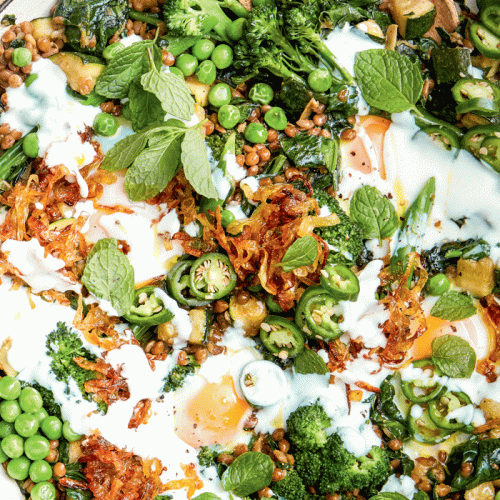
HFG shows you how to change your lifestyle habits and create healthier ones that will stick – for good!
If you use a computer, you’ll know that when it crashes it starts back up again with the basic (and sometimes unhelpful) default settings. The same thing can happen with your food and exercise patterns: you find yourself doing the same things time and time again because that’s the way you’re ‘programmed’ to do them. These default habits are usually linked to a particular context or occasion, and kick in again whenever you find yourself in that situation.
For example, at buffet dinners your default habit could be ‘eat a little bit of everything’. Friday nights might be ‘pick up a takeaway’ or ‘have a few glasses of wine’. Restaurant occasions could be accompanied by a habit of ordering a rich dessert, even if you’re full, or eating everything on your plate to feel you’re getting value for money. A workday default habit could be waking up with only enough time to grab a muffin from a cafe, or skipping breakfast altogether.
Of course, not all default habits are a problem. When you consider the entire spectrum of habits that make up what you usually eat, you’ll hopefully find a few that are beneficial, such as choosing fruit for snacks, taking the skin off chicken, serving meals with salad and not eating the kids’ leftovers.
So can you change default habits that are problematic? Absolutely. As with a computer, it is possible to make a few modifications to transform and improve your daily food and lifestyle habits.
How do I reprogram myself?
According to behaviour change expert Dr Mary Grogan, the first step to reprogramming your behaviour is to consciously identify your personal values. A value is a principle, quality or state of being that is important to you. This could be strength, creativity, success or perseverance (see opposite for many more examples). Your values form the foundation of who you are (or want to be) and what you do (or want to do). Devote some time to thinking about your values, write them down on a piece of paper and keep this list somewhere you can refer to easily.
With your values in place, next you need to identify the current habits that don’t fit with those values. You might have listed ‘self-discipline’ as one of your values, but find yourself slipping more often than is wise when trying to follow a healthy diet. One way to fix this? Create a food diary and commit to writing down everything you eat for a month. You’ll soon start to see where the less health-aligned options are creeping in.
Study your default behaviour and write down what you want to change. The final step is to create new habits to replace the old ones. See the charts below for ways to mesh your values and your new behaviour.
Use this sample list as a guide for creating your own list of personal values and determine your new habits.
- adventure
- courage
- connecting with people
- creativity
- decisiveness
- excellence
- family-centric
- freedom
- good role model
- hard work
- healthy living
- honesty
- independence
- leadership
- open-mindedness
- perseverance
- personal growth
- resourcefulness
- self-discipline
- solving problems
- strength
- success
- trustworthiness
- teamwork
Choosing new food habits
| Old habit | Values | New habit |
| A full-fat takeaway coffee every morning |
|
Ask for a coffee with skim milk and artificial sweetener (or reduce the amount of sugar you use) |
| Ice-cream every night in front of the television |
|
Eat a fruit-based dessert, like cobbler with low-fat custard
Spend time on hobbies or with the family in the evening |
| Friday night takeaways |
|
‘Gourmet night’ for you and your partner (or a friend) – take turns cooking something new each week |
| Always eating packaged snacks and foods |
|
Learn to bake or sharpen up your existing skills. Bake healthy treats and snacks to share with co-workers and friends |
| Going back for seconds after dinner |
|
Pack all leftovers into containers and put them in the fridge before you sit down to eat |
Choosing new exercise habits
| Old habit | Values | New habit |
| Sleeping in until it’s too late for exercise |
|
Wake up 40 minutes earlier for a morning workout
Bring your runners to work for a 30-minute walk outside at lunch |
| Finding any excuse not to exercise |
|
Partner with a friend to make sure you exercise together
Make Sunday ‘hiking day’; walk a different trail every week |
| Getting easily bored by running and walking |
|
Try your hand at a new sport. Or, if you used to play a sport, see if your local school sports team (netball, cricket) needs a referee |
| Unmotivated |
|
Enter a competitive event and begin training six months beforehand |
| Sidelining exercise when you are away from home |
|
When you visit a new place, walk around and explore |
Make good habits stick
Dr Mary Grogan offers these tips for getting your mindset to support your goals.
Baby steps Tackle your changes one by one. Success comes from mastering one area at a time. The confidence you gain from those first steps will motivate you towards meeting your goals and your overall agenda.
Don’t beat yourself up You can know everything there is to know about nutrition and healthy habits, and still sabotage yourself occasionally. When this happens, don’t let self-defeating thoughts take over. Instead, say to yourself, “I’m doing this behaviour instead of that one. How can I correct this?”
Plan for challenging situations When an occasion or circumstance is coming up that could challenge your new behaviours, you need to plan ahead. Work out what you’re going to do. For example, say to yourself, “If that happens, then I’ll do this”. Role playing is a good way to practise your new default settings.
Be creative with replacement behaviour You don’t have to replace food with food. If you’re in the habit of red wine and pizza on a Friday night, recognise that it’s a habit linked to your need for a reward at the end of the week. A replacement reward could mean a sleep-in on a Saturday morning, a hot bath and a good book, going to the movies with friends or pottering in the garden – any activity that fits in with your values and the goals you want to achieve.
Confront cravings When you’re hit by cravings for an old behaviour, don’t push them away. Denial won’t solve the problem. Instead, observe your thoughts and feelings. Recognise what’s going on and reaffirm your commitment to the new, positive behaviour.
Make exercise value-driven Tie your exercise activities into your values. For example, if one of your values is ‘connecting with people’, walk, run or play tennis with a friend. If you listed ‘adventure’, try a new activity or simply try walking or jogging along a different route.
Affirmations to support change
Saying one of these affirmations to yourself may help when you find yourself struggling to stay on track with your new health goals:
- What you do most of the time is what matters most
- If you want something to change, you have to change something
- Vision without action is merely a dream. Action without vision just passes the time. Vision with action can change the world
- Grant me the serenity to accept the things I cannot change, and the courage to change the things I can
- Mistakes are lessons of wisdom. The past cannot be changed. The future is yet in your power.
Choose a favourite affirmation, write it down and put it somewhere you can see every day. Change your affirmation as many times as you like to keep yourself motivated.
Habit stacking
You may have heard of habit stacking. This is the process of adding extra activities to things you already do in your daily life, maximising personal efficiency. You probably already practise it – if you’ve ever watched TV and decided to fold the clothes at the same time, or scrubbed the shower while showering, congrats. You’re a habit-stacking pro!
The key to habit-stacking success is to add extra activities to things you are already doing each day. This builds an association between the two activities that becomes a habit, and will help you maintain them.
Think about times during your day where you might be able to add in extra movement or a healthy activity. Here are some ideas to get you started:
- When you’re putting away your clothes, leave out your workout wear in a neat pile for the next morning so you can slip straight into them first thing when you get up.
- When listening to a podcast, go for a walk around the block while you’re listening.
- Convince your workmates to have ‘walking meetings’ outdoors and get your steps up while you discuss matters.
- When brushing your teeth, do some squats. You might look a little silly but your glutes will thank you for it!
- When cleaning the house, put some music on and dance through it to increase your movement.
Click here to watch Libby Babet’s 5-minute Magic Workout for more ideas!
www.healthyfood.com










